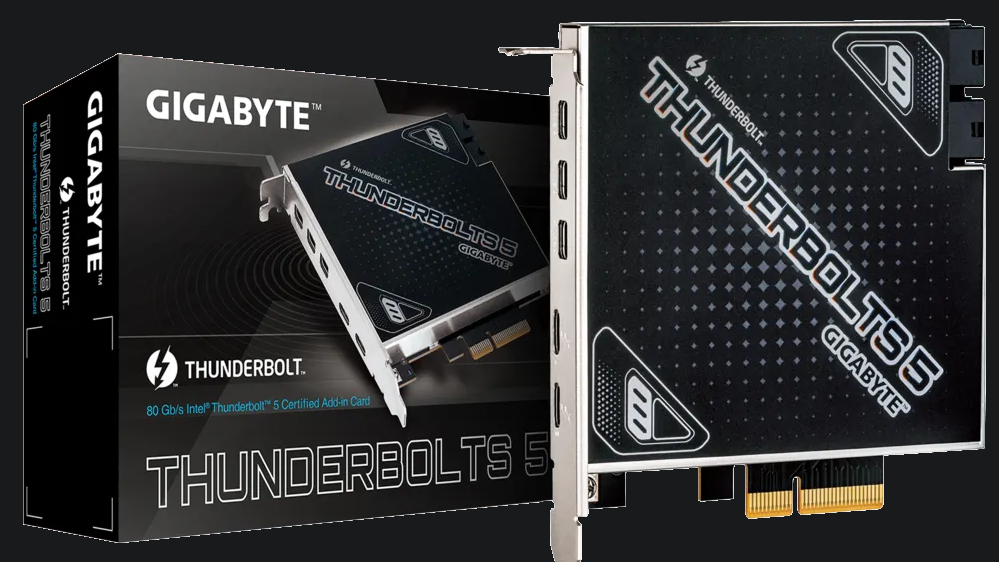
Earlier today, Gigabyte unveiled its first Thunderbolt 5 add-in card, the Gigabyte Thunderbolt 5, which uses an Intel JHL9580 Thunderbolt 5 controller over the PCIe 4.0 x4 interface. It features three Mini-DisplayPort ports and two standard USB Type-C ports that are compliant with the Thunderbolt 5 specification. The add-in card also bundles three Mini DisplayPort cables and three internal header cables (two Thunderbolt header cables and one USB 2.0 header cable).
By default, Thunderbolt 5 operates at up to 80 Gigabits per second, twice the speed of Thunderbolt 4 and USB 4. However, in select scenarios, particularly when connected to external displays, Thunderbolt 5 can also boost bandwidth up to 120 gigabits per second. Gigabyte advertises support for daisy-chaining up to 10 devices (5 devices per main USB-C port) and the USB-PD (Power Delivery) 3.1 standard with up to 100 watts per port.
With the debut of Thunderbolt 5 add-in cards like this, users with at least a PCIe 4.0 motherboard can opt into the Thunderbolt 5 ecosystem, even if their default motherboard I/O doesn't support it. For particularly SFF (Small Form Factor) or thin client PCs, Thunderbolt 5 expansion alongside utilities like external GPU docking stations could be key to providing access to hardware power that would otherwise be impossible for the form factor, though typically, if you have an open PCIe slot you can install an actual graphics card.
More importantly, desktop users who want to opt into Thunderbolt 5 would likely do so for the standard's external storage capabilities. The existence of external Thunderbolt 5 drives like the previously-covered Sabrent Rocket XTRM5 and the OWC Envoy Ultra will be best utilized for many desktop users with add-in cards like this one.
Interestingly, these drives are only rated for around 48 to 50 gigabits (6 GB) read speeds, so future external Thunderbolt 5 drives should actually get even faster than these options. And as long as you have a reasonably recent motherboard supporting PCIe 4 (pretty much every motherboard made since 2019), you should also be able to enjoy these superior external storage drives.







